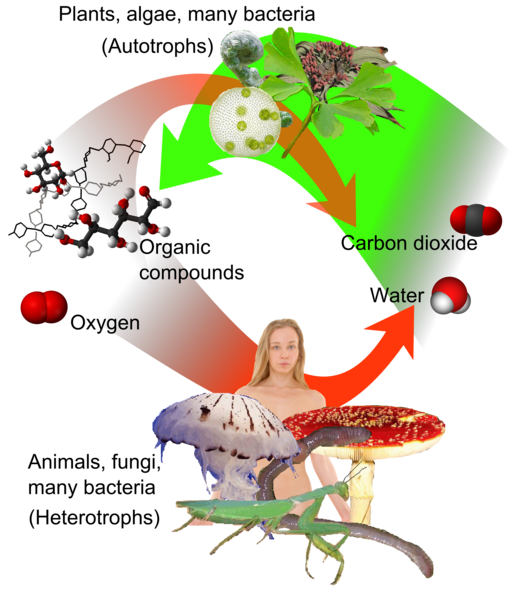Biology: The study of life
Organisms are any contiguous living things that are characterized by their ability to respond to environmental (external/internal) stimuli, grow and reproduce. They are composed of chemical elements and governed by the principles of physics and chemistry. Organisms display an inherent synergy where a greater organization of chemistry defines the underlying properties yet appear as a synthesis of more than an assemblage of individual parts. Life, in this context, maintains a complex order and counters entropy.
How do organisms live?
Living things use energy to actively regulate their internal environments in response to internal, external or environmental stimuli. We call this regulation homeostasis. Active regulation can refer to energy being used to counter environmental changes (maintenance of body temperature in mammals and birds) or behavioral adaptations (a lizard basking in the sun to stay warm).
Energy is the physical capacity to do work. Biological systems are governed by a complex series of chemical reactions and energy is stored/released in the form of chemicals. Chemicals within biological systems cycle as they are transformed from one compound to another, but energy flows within the system. The set of chemical reactions that occur within organisms is referred to as metabolism. Metabolism consists of two types of reaction: building larger chemical compounds from simpler parts (anabolic) or reduction of chemicals to simpler forms (catabolic).
Ecosystems
The air, land and water on Earth where organisms exist is referred to as the biosphere. The biosphere contains populations (members of a given species within a given area) and communities (collections of interacting populations). We call the physical environment where various populations interact within a community an ecosystem. Ecosystems are comprised of all the organisms, as well as the abiotic physical components of the environment. In short, the biosphere is the sum total of all ecosystems on the planet.
Ecosystems are characterized by chemical cycling and energy flow. Energy is used to do work and is lost through inefficient transfers. Chemicals are mostly locked into ecosystems and cycle from one form to another through various anabolic and catabolic processes. The biosphere receives a constant input of energy from the Sun. Organisms that are capable of producing complex molecules from simpler ones using the light energy (phototrophs) or energy from inorganic compounds (chemoautotrophs) are referred to as autotrophs (self feeders). Heterotrophs are organisms that cannot self feed and must ingest or absorb organic material to acquire energy and raw material.

Looking outside
Nature and ecosystems can be found even in New York City! Follow the list items and video below.
- Look around and think about the various organisms
- Identify autotrophs and heterotrophs
- What are the energy sources and how is the energy flowing?
- How are chemicals cycling in this system?
Humans and ecosystems
Humans abound in the city. Humans depend on healthy ecosystems for:
- food
- medicines
- raw materials
But Humans also have a large impact on ecosystems. Much of the wildlife we associate with NYC are foreign invasive species that were introduced by people. These invasive species change the dynamics of local ecosystems. Some examples include:
- rock doves (pigeons)
- house sparrows
Identify the invasive pest species in the video below:
Here, the invasive species is a food item. Ordinarily, we relate this species with disease. Why does this pest species flourish in a place like NYC? How do we counter control this pest species in a way that is not detrimental to other species within the ecosystem?





This Pest Species flourishes in New York because, there’s a lot of Food Supplies that can keep this certain species alive and they tend to live where there’s plenty of food for each of their offspring. They are usually around at Night where there aren’t many Predators looking for them eating food from Trash Bins, and since they are Heterotrophs as well, they Release CO2 and are able to Allow the Autotrophs to Release Oxygen for the Heterotrophs. Just like the Cycle Shown Above. This is how we counter this pest species in a way that they are not harmful to the other species within the ecosystem.
I think the idea of countering is misunderstood. Here, I mean it is a a way we could control the population of the Pest that is not detrimental to the ecosystem.